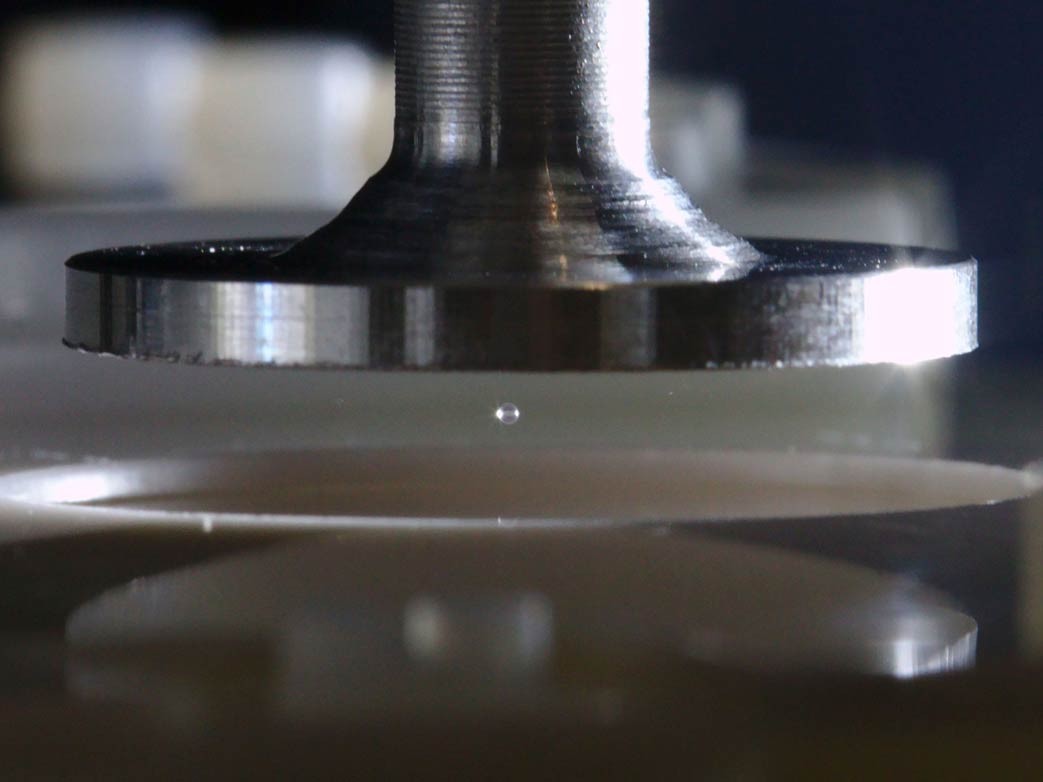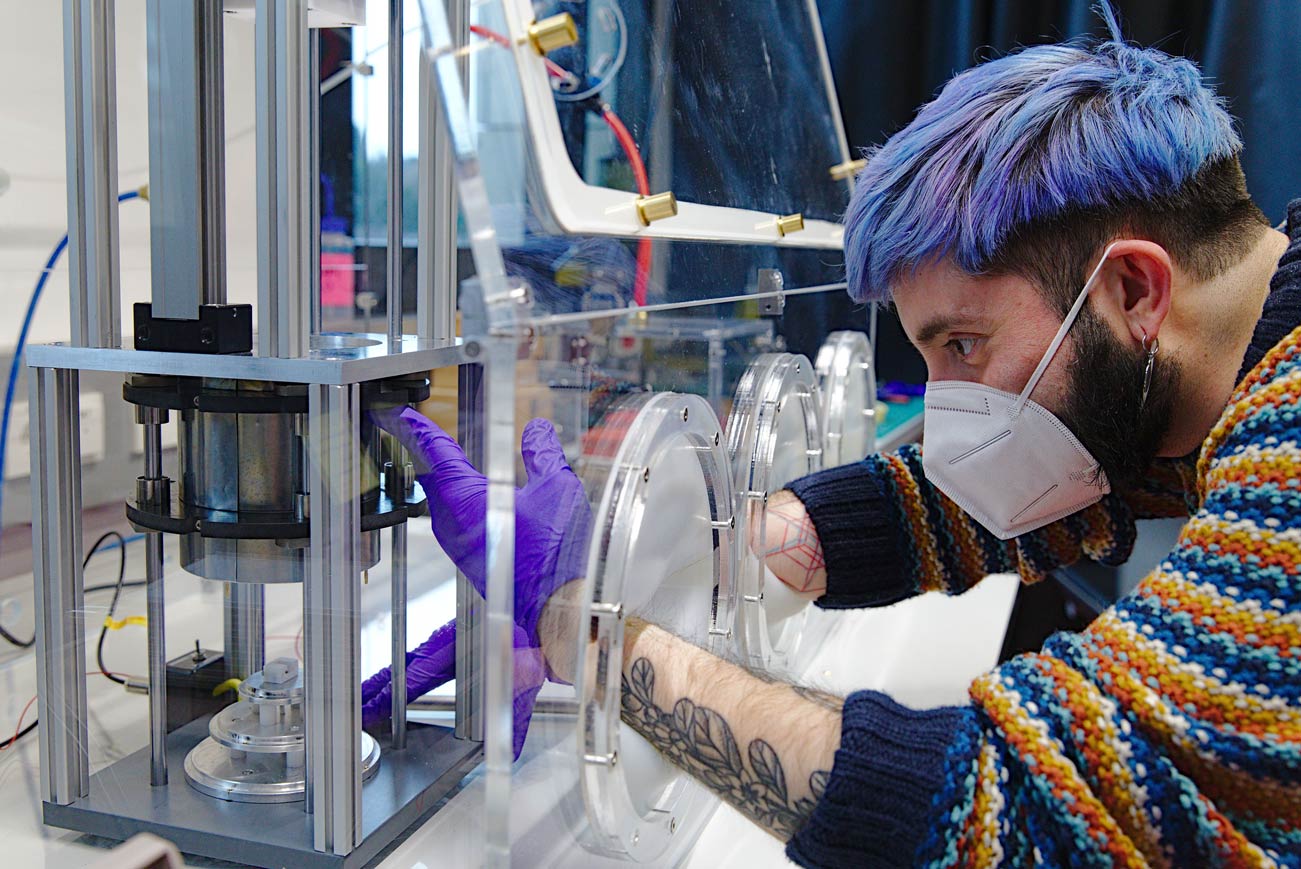February 9, 2021
Unsolved mysteries of an everyday phenomenon
For centuries scientists have been struggling to answer seemingly simple questions about electricity.
Watch the corresponding video on YouTube
A simple experiment like rubbing a balloon on your hair and charging it up cannot be as easily explained by physics as one might think, showing the complexity of the underlying mechanism. Scott Waitukaitis and his research group at the Institute of Science and Technology (IST) Austria are trying to answer some of these mysteries in physics.
Everybody who owns a cat knows how much rubber balloons or pieces of plastic like to stick to a cat’s fur, often to its dismay. This happens because the object and the cat’s hair exchange electrical charges when they touch, leaving one positively charged and the other negative. Since opposite charges attract each other, they stick together – a common physical phenomenon called tribocharging. You can feel it yourself when you get an electric shock after rubbing your feet on a carpet. In this case you yourself are electrically charged and the charge tries to get away from you by moving to an electrically conductive object like a door handle. The charge on your body is so strong it can jump through the air overcoming several millimeters to get to another object close to you. You can feel and even see this as a tiny spark.
Already the ancient Greeks knew about this effect, but the question how it actually works is bothering scientists until today. Scott Waitukaitis joined the Institute of Science and Technology (IST) Austria to get a little closer to answering this age-old question: “I am fascinated by the seemingly simple everyday phenomena around us and their underlying complexities.” His research is connected to a long history of disputed theories trying to explain this puzzling everyday phenomenon that affects many aspects of our lives.

Bouncing Glass
To get closer to understanding the phenomenon of tribocharging, in one of their experiments, Scott Waitukaitis and his team are looking into charge exchange between two super-flat surfaces made of the same plastic by touching them together in controlled environments. One would expect there to be no charge exchange – after all, the forces that push and pull the electrons, atoms, and other chunks of material that carry the charge should be the same for both objects. However, using an electron microscope, the scientists found that tiny droplets of water the size of a billionth of a meter from the surrounding air condense on the surfaces of the objects. The objects are thus no longer identical and the symmetry is broken, allowing for charges to be exchanged.

© IST Austria
In another experiment, they study how bouncing a small glass sphere repeatedly on a glass surface charges up the sphere. Again, one would expect no charge exchange between objects of the same material, but something breaks the symmetry. The scientists measure the amount of charge that is transferred as precisely as possible. For this, they levitate the glass sphere using ultra sound. By controlling the sound waves around the sphere, they can hold it in midair. When the ultra sound is turned off, the sphere bounces on the glass surface beneath exchanging charge in a controlled way. The researchers watch the sphere’s motion with a high-speed camera and apply an external electric field allowing them to measure the charge exchange between the glass sphere and the glass surface during each collision without touching it. With this experiment, the scientists want to find out what breaks the symmetry between the glass sphere and the glass surface.
Futile Lists
Long before high-tech experiments like the ones by Scott Waitukaitis and his team were even imaginable, people were eager to understand the tiny sparks they felt. The first written record of the exploration of what we today call tribocharging dates back to ancient Greece over two thousand years ago. It was those early investigators and their experiments that gave us the modern word “electricity” stemming from the ancient Greek name for amber, “electrum”, which was used to charge fur that was rubbed on it.
During the eighteenth century, researchers like Michael Faraday of the Royal Institute of London began to investigate the issue more systematically. They established so-called triboelectric series listing different types of materials depending whether they charge positively or negatively when rubbed together. Unfortunately, this purely empirical approach at understanding the phenomenon gives little physical insight as to why charges move between materials, let alone what they are. Additionally, these lists depend strongly on environmental factors like humidity, material surface properties, or simply on the way they are rubbed together, so researchers have produced many different such lists.

Our understanding of what goes on at the atomic level has greatly advanced since the time of Faraday. The development of quantum mechanics at the beginning of the twentieth century and vastly more precise measurement devices have enabled scientists to probe deeper and deeper into the micro-scale world. They have succeeded in developing explanations and models for how tribocharging works in metals, as their material properties are quite well understood. Models of more complex materials, such as crystalline or amorphous insulators, still remain much harder to grasp. Additionally, the effects of oxide layers on metal surfaces, like rust, and the influence of mechanical stress on charge exchange, like in the stretched rubber of a balloon, could play an important role in tribocharging.
Cat Hair and Space Dust
Understanding tribocharging is crucial – not only to know why exactly your cat cannot get rid of a balloon or why you just got shocked by the door handle. Tribocharging also is responsible for lightening: In thunderclouds, ice particles of different sizes float around and bump into each other exchanging charge even though they are all consisting of the same material. Interestingly, the size of the particles seems to determine which charge they acquire, but why this happens is still not fully understood. This process builds up an incredible amount of separated charge in different parts of the clouds that then discharges through lightning. Essentially, it is the same as the tiny spark you can feel when your own body discharges to a doorknob, but on a much larger scale.
Another phenomenon scientists believe tribocharging is also responsible for, happens on an even larger scale, although, it is less obvious to us. Planets form from diffuse clouds of dust around stars. Researchers suspect these particles of space dust exchange charges when bumping into each other and then stick together because of the attraction between the charges. This accumulation happens until the forming chunks are big enough so gravity can take over the collection of more material. The effect of tribocharging may therefore play a crucial role in the formation of planets, including ours, giving us the ground we stand on.
Studying this variety of tribocharging phenomena not only gives us insights into the fundamental physics of our everyday environment, but may one day help us control the effect in future technologies. It could be applied to create nanoparticles for various uses in medicine and engineering or to charge tiny generators powering remote sensors for gathering environmental data and wearable devices to monitor your health. With their research, physicists like Scott Waitukaitis help to establish the foundations for such future technologies and for the understanding of everyday phenomena.



